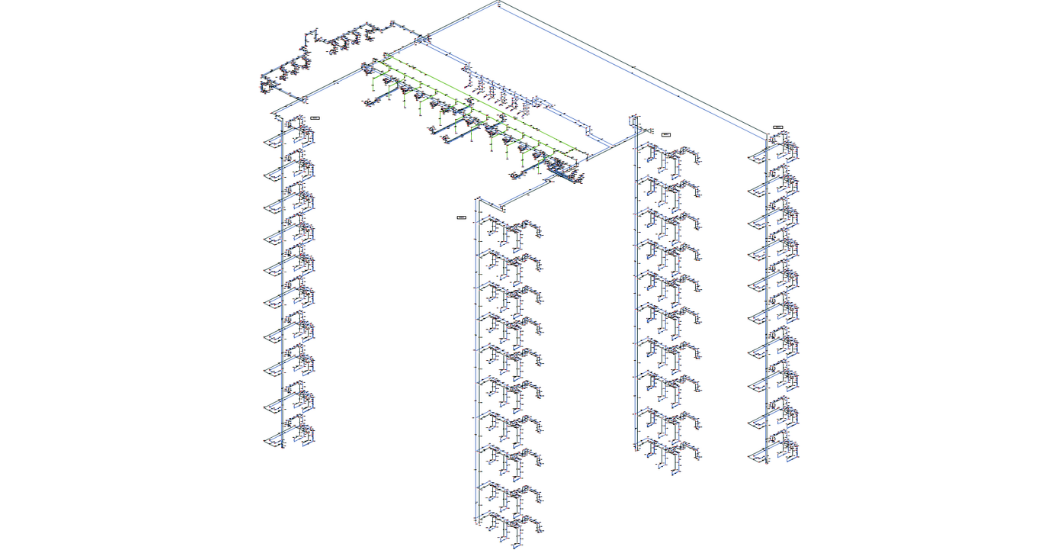Protton Synergy Pvt. Ltd.
Mumbai, India
Platinum Pipe Award Winner: Most Interesting Model
The internet is everywhere, from binge-watching TV series, the endless scrolling of social media, and especially in the post-COVID world of remote work. As the world relies on more internet, companies must construct larger data centers to house new content and centralize information. These enormous data centers spanning multiple stories require larger HVAC systems to maintain cool temperatures, resulting in more complex distributions at higher flowrates.
Protton Synergy engineers Samarth Pawar, Kalpesh Birla, and Gaurav Bhende were tasked with evaluating the surge potential of 9 HVAC circuits in an 11-story data center. These included chilled water, process water, condenser, condensate, and fuel oil circuits. Each system was made up of hundreds or thousands of pipes and junctions ranging from 2 to 60 inches (5 to 150 cm) in diameter.
Initial AFT Impulse models were imported from a client provided Navisworks model using AFT’s Neutral File import capability, as seen in Figure 1. The resulting import provided an isometric view of the system and a foundation to incorporate the hydraulics upon. Some components were modeled using resistance curves from collected pressure-drop data and pump curves were incorporated according to manufacturer data.
While steady state design calculations were performed by the client, the Protton team performed an independent steady-state study before beginning transient analysis. These results closely matched the client’s results, reinforcing the team’s confidence in the application. Once each system was calibrated at steady state, they could evaluate their surge concerns.
The Protton team evaluated typical surge events including valve closures, pump trips, and pump restart events as well as the resulting relief and check valve responses. They could use the resulting maximum pressure to compare to ASME B31.3 standards, ensuring their selected piping would withstand the surge event. They were similarly able to confirm minimum pressure requirements were met, avoiding cavitation of the fluid and vacuum conditions. The team also explored the impact of closure time on transient response by comparing linear percent open closures using valve characteristic curves.
While considering the pressure response is essential, the team could also export the resulting transient forces for their stress engineers and civil structural team to design suitable supports. These force sets consider the effects of momentum and friction and can be defined as either point forces or differences across elbow pairs.
AFT Impulse was credited by the team for its robust solver, able to converge nearly 3000 pipes in a system without issue. They found rapid editing through Global Edit minimized both time and effort to implement layout changes from the design team. Their results could be easily communicated through graphs and tables, ensuring the client understood both the problem and mitigation solution. Engineers like the team at Protton ensure that the next time your favorite online time-sink is down, it wasn’t due to an avoidable surge issue.

Figure 1: Side-by-side comparisons of a chilled water circuit in Naviswork and the resulting neutral file imported into AFT Impulse. AFT Impulse Model on the left and Navisworks file on the right.
PROTTON SYNERGY PVT. LTD. is a specialized engineering consultancy providing engineering and design solutions in the field of Process & Petrochemical Industry. Their focused, pragmatic and resourceful team ensures they enable clients to achieve their targets and aspirations.




